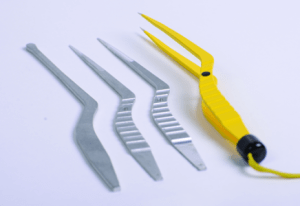Small Tooling Solutions Addressing Big Challenges
It’s a good sign when a customer asks a shop to ramp up production of a current part. It means more revenue. It’s validation of the work that’s been done. In fact, it’s downright exciting. It’s followed shortly, however, by the inevitable question, “ok, how are we going to actually make this happen?” And when the request involves a demanding part, as was recently the case of Homeyer Precision Manufacturing, the question becomes an even bigger one.
For the Marthasville, Mo. shop, they had to find a way to expand production of bipolar, aluminum-based forceps used by neurosurgeons performing brain surgeries, and all while adhering to exacting standards. With end mill runout during one of the most critical production processes causing poor surface finish after about 2,200 parts, they knew they had to find a better way if they wanted to efficiently increase volume.
Around that same time, shop owner and National Tooling and Machining Association (NTMA) chairman, Herb Homeyer had the opportunity to go on the NTMA European Tech Tour. While on a stop Kaiser’s manufacturing facility in Switzerland, he met our VP of sales and engineering, Jack Burley. The forceps came up in conversation. The veteran engineers put their heads together. And the rest, as they say, is history.
Read how the combination of a new tool holding solution and coolant improved tool life by 300 percent and extended unmonitored production time by even more in the Cutting Tool Engineering case study, “Shop Wrangles Runout Challenge.”



Did you find this interesting or helpful? Let us know what you think by adding your comments or questions below.